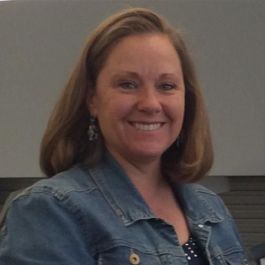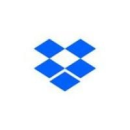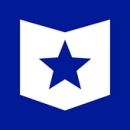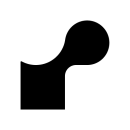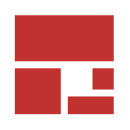Whether it’s a sales team tracking time spent on demos, engineers carefully monitoring page loading times or writers counting clicks, defining success and measuring progress toward it is incredibly important. This is especially true for people teams, which arguably have the toughest metric of all to quantify and track: happiness.
As the pandemic has shown, happiness is a moving target. Someone working 40 hours per week at home needs different things to be happy in their job than when they spent 40 hours per week in the office. Prospective parents want different things from a perks and benefits package than their colleagues who aren’t starting or growing a family. A larger company is naturally expected to offer employees “more” in terms of programs and initiatives.
Keeping a finger on the pulse of what makes employees happy is key to building a people-first company, which has become the expectation among today’s job seekers who have grown tired of coming in second at the office. If that sounds like you, then continue reading to learn more about how companies like Dropbox, JPMorgan Chase and RingCentral work to understand and meet their employees’ needs.
Dropbox is a file storage and collaboration company whose technology is designed to help teams work better together.
What steps has Dropbox taken to foster a people-first culture?
Our shift to a virtual-first work environment has transformed how we work together, and as a company we’re approaching this transformation with great intentionality as our employees are our greatest asset! We aim to improve work-life balance and provide the support employees need to be healthy and productive. One key to achieving this balance is allowing Dropboxers to work from almost anywhere.
We are focused on what really matters — impact and results — and allow our employees to design their own schedules based on what works best. We’ve established “core collaboration hours” with overlap between time zones to help strike a balance between working together, responding asynchronously and spending time on deep, focused work. Offering our employees choice and flexibility on where and when they work helps us improve work-life balance and supports both a thriving business and a healthy employee workforce.
What perks, benefits or other offerings help support a people-first company culture?
In the early days of Covid-19, we realized our employees needed more robust mental health services. We introduced a new global mental health support program through Modern Health, which allows our employees access to eight sessions of both mental health coaching and therapy services for themselves and their immediate family members at no cost. In the first year of this program we experienced an employee registration rate of 49 percent, with over 40 percent of employees accessing care. Over 600 employees sought coaching and therapy services and over 300 are using Modern Health’s digital services.
Our employees have given this program a rating of 4.9 out of 5 stars and 91 percent agree that these services have improved their well-being. At Dropbox, we believe in supporting the entire person, which includes their physical, emotional and mental well-being along with the well-being of their family. Our Modern Health program completely aligns with our culture of employee care.
How do you gauge the effectiveness of these efforts and ensure employees feel valued and supported? And what are some ways you’ve adapted your strategy in response?
When evaluating program effectiveness, we rely on a combination of employee engagement data and employee satisfaction results and adjust as needed. With our shift to virtual first, our in-office gym and fitness class offerings couldn’t be utilized. We tested virtual classes for cardio, dance, meditation and yoga but unfortunately didn’t see enough participation. In evaluating the fitness programs our employees were discussing on Slack, we realized that Peloton seemed to be very popular. This finding resulted in Dropbox offering the Peloton Corporate Wellness program.
Dropbox subsidizes the membership fees for employees, who also receive discounts on select Peloton equipment. The flexibility of this program perfectly aligns with our virtual-first approach to work. In just the first month of the program, 31 percent of eligible employees enrolled and participated in over 3,500 classes, and engagement with the program continues to grow. This benefit has given our employees a new way to connect with each other and build community while improving their physical and mental health.
JPMorgan Chase is one of the world’s largest banks and financial services companies.
What steps has JPMorgan Chase taken to foster a people-first culture?
At JPMorgan Chase, our customers are at the center of everything we do. Chase’s product, data, design and technology teams work very closely to build and design digital products and services that help more than 60 million households make the most of their money. We have a purpose-driven culture that attracts individuals who want to make a tangible impact in our customers’ lives. There aren’t many companies where you can have a direct impact in the lives of tens of millions of consumers every single day.
What perks, benefits or other offerings help support a people-first company culture?
Benefits certainly play a role in what motivates people to join a company, but culture is what drives people to stay and grow their careers. At JPMorgan Chase, we work hard to build a collaborative, purpose-driven culture that creates results and empowers employees to bring their best selves to work. As technologists, we like to solve problems big and small, and innovate and problem-solve every single day. As CIO for Chase, it’s my job to remove roadblocks for people so that they can be effective at their job and build incredible experiences for our customers. This includes driving efforts to foster diversity, equity and inclusion, which is a major focus at our company.
Diverse teams, especially diverse tech teams, are more innovative and productive, helping us to better serve our nearly 59 million digitally active customers. I am energized every single day by the incredible talent and passion of our employees. That’s what attracted me to join the company nearly two years ago and something that I am very proud to be part of.
How do you gauge the effectiveness of these efforts and ensure employees feel valued and supported? And what are some ways you’ve adapted your strategy in response?
The firm regularly requests feedback from employees to measure their attitudes on a variety of topics. On my team, I’ve created an open-door policy for myself and my direct reports with the intent of it trickling down throughout our organization. When people see something that’s off, they are empowered to say something so that we can fix it. I regularly invite more junior employees to meetings with the goal of having them participate, ask questions and learn. If you want to grow your career and get the support and resources to perfect your craft, you can absolutely do that at JPMorgan Chase.
Course Hero is an edtech company whose course-specific learning platform is designed to connect students with the resources they need to pass classes and graduate from college.
What steps has Course Hero taken to foster a people-first culture?
At Course Hero, we care deeply about our employees and are committed to creating a people-first culture. Early last year we transitioned to being a virtual-first company, providing employees the flexibility to mostly work from home within our established hubs with the option to go into an office for any work or social gathering.
This decision was based on survey feedback that showed 85 percent of employees were more productive working remotely and enjoyed the additional flexibility. Other feedback highlighted challenges with collaboration and maintaining social connections while working from home. We believe that our virtual-first approach and centralizing employees around hubs to allow more opportunities for face-to-face interactions is a win-win that supports our employees, teams and culture.
What perks, benefits or other offerings help support a people-first company culture?
We offer industry-aligned medical benefits and a retirement savings plan with a rich employer match. With the move to being a virtual-first company, we also updated our benefits to include, among other perks, a home tech stipend, wellness stipend and monthly snack boxes delivered to employees’ homes. In addition, small group lunches and virtual events allow employees to stay connected and engage with other team members on a regular basis. Lastly, we recently added “no meeting days” to allow employees more time to focus on independent work, increase productivity and prevent burnout.
How do you gauge the effectiveness of these efforts and ensure employees feel valued and supported? And what are some ways you’ve adapted your strategy in response?
At Course Hero, we collect feedback on perks and benefits regularly to ensure employees feel supported and stay engaged. We use this feedback to update our programs annually to maintain a people-first culture.

Render is building a cloud platform designed to be both easy to use and capable of hosting simple websites or the most complex of applications.
What steps has Render taken to foster a people-first culture?
At Render, maintaining a people-first culture is a shared responsibility. We acknowledge and own the impact each of us has on the day-to-day experience here. We’ve taken the time to document and codify our traits; low ego and candor with empathy are daily behaviors you’ll see at Render.
What perks, benefits or other offerings help support a people-first company culture?
We’ve implemented “Covid-19 half days.” Until the pandemic is over, we encourage employees to take a half-day off work each week. While the success of any benefit can be challenging to measure, we recently received the following feedback in an anonymous employee survey:
“I’m grateful for a culture that respects my personal boundaries between work, self-care and family time and motivates me to work more productively to balance them. I’m looking forward to avoiding burnout long-term while contributing my very best work to Render’s success.”
On top of this, Render provides four weeks of paid time off per year and we offer 12 weeks of fully paid parental leave for all parents to bond with a newborn, adopted or foster child. Once leave is complete, we’ll work with you to create a supportive return-to-work plan.
How do you gauge the effectiveness of these efforts and ensure employees feel valued and supported? And what are some ways you’ve adapted your strategy in response?
We make space for feedback, especially in private forums as not everyone is comfortable speaking publicly, and we keep track of the insights shared and look for patterns. This last piece is critical as we aim to make thoughtful, sustainable changes. Some of these are small, like making the after-hours on-call rotation more manageable by investing in projects to reduce pages, learning from incidents and normalizing time off after them.
In contrast, others have been large, like moving away from geography-based compensation as we continue to receive relocation requests from team members and incredible out-of-state candidates. Regardless of the size, each adaptation has been meaningful and, most importantly, in line with the company and culture we want to continue to build.
Aurora Solar builds software for solar energy companies with a platform designed to automate workflows and give salespeople additional insight into the impact solar can make on a client’s energy bill.
What steps has Aurora Solar taken to foster a people-first culture?
As we’ve grown from 50 to nearly 300 employees in less than three years, a significant change has been building out our management layer. While some may see this as bureaucracy, from a people team standpoint, we place a huge emphasis on what it means to be a manager because this is the key to employee success.
In 2021, a major focus was creating community among our people managers and concretizing expectations. For example, we started hosting people manager all-hands meetings every quarter. This is an opportunity for us to reinforce what we expect from people managers, create community and share best practices. Additionally, we invested heavily in manager readiness and enablement. All of our managers — both new hires and promotions — go through a series of workshops where we communicate our people manager values and ensure they know how to accomplish key things for their teams.
Finally, we’ve focused on creating channels for delivering feedback on an ongoing basis. Whether through our company AMAs, ongoing pulse surveys or reviews of our engagement survey at both a company and team level, we know that communication is an essential component to healthy scaling.
What perks, benefits or other offerings help support a people-first company culture?
Aurora shifted from being an office-centric company to a fully distributed team with people in nearly every state and province in Canada. For our benefits, we intentionally focus on efforts that will make for a more inclusive company and directly support employees as we move to a distributed team model.
With our shift to a distributed workforce, we needed to find new ways to support our team. It was no longer about snacks in the office but rather enabling people to do their best work from home. We launched several stipends: one to help set up a home office, another for internet plans and even monthly coworking membership support. Having stipends that support our team members in a flexible way is essential. In 2021, we also launched our voluntary relocation policy. We noticed employees increasingly wanted to move around the country and determined we were not going to require a return to the office. It was important for us to make sure employees knew it was OK to move and what we expected.
Finally, I want to shout out the amazing initiatives of our workplace team. They’ve done an incredible job of building communities in a virtual world while also delighting the team with surprise gifts throughout the year.
How do you gauge the effectiveness of these efforts and ensure employees feel valued and supported? And what are some ways you’ve adapted your strategy in response?
How you gather feedback shifts as a company grows, especially when your team is distributed. Early on you can keep a pulse by walking around the office and having coffee chats. But with hundreds of people, your strategies need to be intentional, scalable and have follow through.
As a people team, we gather real-time feedback through Lattice pulse surveys, onboarding check-in meetings to ensure new hire success, company AMAs and our annual engagement and DE&I surveys. We conduct our engagement survey once a year, typically toward the end of the year, and push for as much participation as possible. This year we had 90 percent participation, which resulted in more than 1,500 unique comments and thousands of data points. It was a whole lot of reading!
Our people team spent the next two months pouring over the survey data to identify major themes and takeaways, which in turn drove our people team roadmap for 2022. Along with a companywide review of the results, every VP hosted an all-hands for their teams to discuss takeaways and make an action plan. We’ve overwhelmingly heard that the team truly valued seeing feedback both acknowledged and acted on.
RingCentral is a cloud-based communications company that offers solutions for business phone lines, contact centers, video meetings, and more.
What steps has RingCentral taken to foster a people-first culture?
Our employee-led ERGs embody our inclusive, people-first culture. Our ERGs encourage open and authentic dialogue, spreading educational awareness and driving positive change. Our ERGs include BE@R (Black Employees @ RingCentral), the Pan-Asian Network, Rainbow Room and HOLA (Hispanic Organization for Leadership & Achievement). Our employee programs, events and ERGs aim to highlight our cultural and communal uniquenesses. It is not one team or department that spearheads initiatives but our global community of employees.
It’s important for leadership to provide transparency and unite our global employees, along with answering questions and listening to their needs. We help foster a people-first culture that encourages everyone to bring their authentic selves. To nourish and enable human connections, we launched a friendship program called “Hello, RingCentral – Friendship Alliance,” in March of 2021 aimed at fostering new friendships between employees who might not otherwise have an opportunity to meet. The program pairs employees who opt-in for a 15 to 30 minute private video meeting that serves as an icebreaker.
What perks, benefits or other offerings help support a people-first company culture?
Our workplace has evolved and it’s important we learn how to adapt to the changing needs of our employees. Working from anywhere has led us to new and innovative ways to build and foster our culture. At RingCentral, we have five pillars of wellness, with benefits and ERGs associated with each. These pillars are: emotional, physical, financial, intellectual and social. At RingCentral, prioritizing mental health and wellness helps support and nourish our culture.
We support our employees through resources such as TaskHuman for one-on-one wellness coaching, Headspace for meditation guidance and ClassPass. Taking the time to recharge and reset is important to us. We’ve implemented “CaRing Days” — a company day of self care — once per quarter. Our employees are at the core of our culture and providing them with resources to recharge, refresh and grow helps us continue to build our people-first culture.
How do you gauge the effectiveness of these efforts and ensure employees feel valued and supported? And what are some ways you’ve adapted your strategy in response?
We are keen on receiving honest feedback from our employees and have updated our engagement survey process and added annual diversity, equity and inclusion global surveys. For each organizational unit identified, employees volunteer to participate and join the associated employment advisory committee to drive positive change in that business unit.
The committees for each organizational unit come together to review the survey data and make recommendations to senior leadership. Our ERGs encourage open, honest and courageous conversations. Through engagement tracking, participation and feedback, we have the right resources to create change and ensure our employees feel and are heard.
Granular is developing software to help farmers make better decisions, whether it’s where to plant their crops, how to respond to price swings in the market or how to work better with their team.
What steps has Granular taken to foster a people-first culture?
We’ve worked hard to ensure our team feels supported and that they can succeed and thrive during what has been a challenging couple of years. Having a collaborative and innovative team allows us to work to solve meaningful challenges in agriculture. But how do we do that? First and foremost, we listen to our team!
We do this through lots of mechanisms: team survey, listening sessions with leaders and HR, participating in office hours and roundtables, and new hire surveys and exit interviews. There is no one-size-fits-all solution, so it takes pulling together information from lots of sources to hear what’s working and where we need to adjust. It’s neat to try something new and different and then adjust and tweak it based on feedback.
Some initiatives we have put into action include virtual events, empathy training for managers and office hours.
What perks, benefits or other offerings help support a people-first company culture?
We started offering “refresh Wednesday” in response to seeing a decrease in personal learning and career activities during the pandemic. We removed recurring meetings, encouraged employees to set aside dedicated time toward skills development and offered funds and support. Refresh Wednesday can be spent learning new skills, extending current skills and having new experiences.
We also added intentionality around our diversity, equity and inclusion efforts by forming a racial justice subcommittee that meets and drives philanthropy efforts and organizes guest speaker events, in addition to providing a safe space for hard conversations. We’ve also found opportunities to celebrate cultural diversity, including Black History Month, Women’s History Month and holidays such as Holi and Lunar New Year.
Additional initiatives include a new approach to compensation that ensures pay equity, efforts to replicate the in-office experience for remote employees and bringing remote employees in the same geographic area together. Our Brazil team hosted a virtual happy hour complete with a cooking demonstration and history lesson.
How do you gauge the effectiveness of these efforts and ensure employees feel valued and supported? And what are some ways you’ve adapted your strategy in response?
We listen to employees to understand how they’re doing and then we pivot and adjust. For example, when we got the sense that a subset of employees were working long hours and weren’t taking the breaks they needed to to ensure an awesome work-life balance, their leaders took an intentional approach to creating the space they needed around a holiday by removing meetings and adjusting timelines, virtually forcing a break.
Additionally, we have a question in our team survey that says, “I feel well-supported by Granular.” This is a measure of whether our people-first efforts are hitting the mark or if we need to adjust. If that number dips or we see gaps, we know something isn’t right. If our employees don’t feel well-supported and that their well-being comes first, they won’t be able to bring their best selves to work or to home, and we don’t want that!
Granular has also conducted listening sessions with HR and employees to understand how they’re doing, what they’re up to and what we can be doing better. A confidential rollup of these conversations is used to shape and inform how our leaders communicate and where to adjust.



